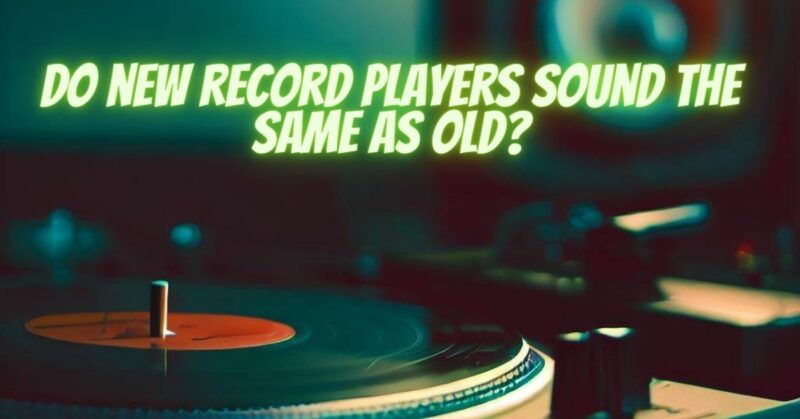With the resurgence of vinyl records, both seasoned audiophiles and new music enthusiasts have embraced the warmth and nostalgia of analog sound. As vinyl continues to gain popularity, many wonder whether modern record players can replicate the vintage charm and sonic qualities of older models. In this article, we explore the differences between new and old record players and whether they sound the same or offer distinct audio experiences.
The Appeal of Old Record Players
Old record players, especially vintage models from the mid-20th century, hold a special place in the hearts of audiophiles. These vintage turntables often feature classic designs, heavy-duty build quality, and precision engineering. Many enthusiasts believe that the components and manufacturing techniques used in older turntables contribute to a unique and characteristic sound that cannot be entirely replicated in modern devices.
Sound Characteristics of Old Record Players
Vintage record players are known for certain sound characteristics that have left an indelible mark on audiophiles:
- Warmth: Old record players are often associated with a warm and rich sound, characterized by smooth midrange and gentle highs. This warmth is partly attributed to the analog nature of vinyl playback and the inherent tonal characteristics of components used in vintage models.
- Analog Distortion: Some enthusiasts appreciate the subtle analog distortion present in vintage turntables. These imperfections, such as slight surface noise or harmonic distortion, add a unique charm to the sound and are reminiscent of the nostalgic vinyl experience.
- Unique Turntable Designs: Vintage turntables were crafted with individuality in mind, and the construction of each model varied significantly. Some audiophiles believe that specific turntable designs contribute to the unique sound signatures of vintage players.
Advancements in Modern Record Players
While vintage record players have their charm, modern technology has significantly advanced turntable design and manufacturing. Modern record players benefit from improved engineering, materials, and manufacturing processes, leading to enhanced performance and fidelity. Some aspects of modern record players that contribute to improved sound quality include:
- Precision Engineering: Modern record players are built with a high level of precision, reducing mechanical resonance and vibration for more accurate sound reproduction.
- High-Quality Components: Modern turntables often feature high-quality tonearms, cartridges, and styluses, allowing for cleaner tracking and improved sound clarity.
- Integrated Preamps: Many modern record players come with built-in phono preamps, ensuring proper signal amplification and compatibility with a wider range of audio systems.
- Advanced Anti-Skate and Tracking Technology: Modern turntables incorporate sophisticated anti-skate and tracking force adjustments to minimize wear on records and maximize sound accuracy.
- Consistent Speed: Modern turntables maintain a more stable rotation speed, reducing pitch fluctuations and ensuring accurate playback.
The debate over whether new record players sound the same as old ones is subjective and depends on personal preferences. While vintage turntables offer a unique and nostalgic sound with their warmth and analog characteristics, modern record players have made significant strides in sound fidelity and performance. Ultimately, the choice between new and old record players comes down to individual taste and the desired audio experience.
Whether you opt for the vintage charm of an old record player or the fidelity of a modern one, vinyl records continue to enchant music enthusiasts with their timeless appeal. Embrace the joy of vinyl playback, regardless of the turntable you choose, as both old and new record players offer a captivating journey into the world of analog sound and the cherished art of vinyl listening.


